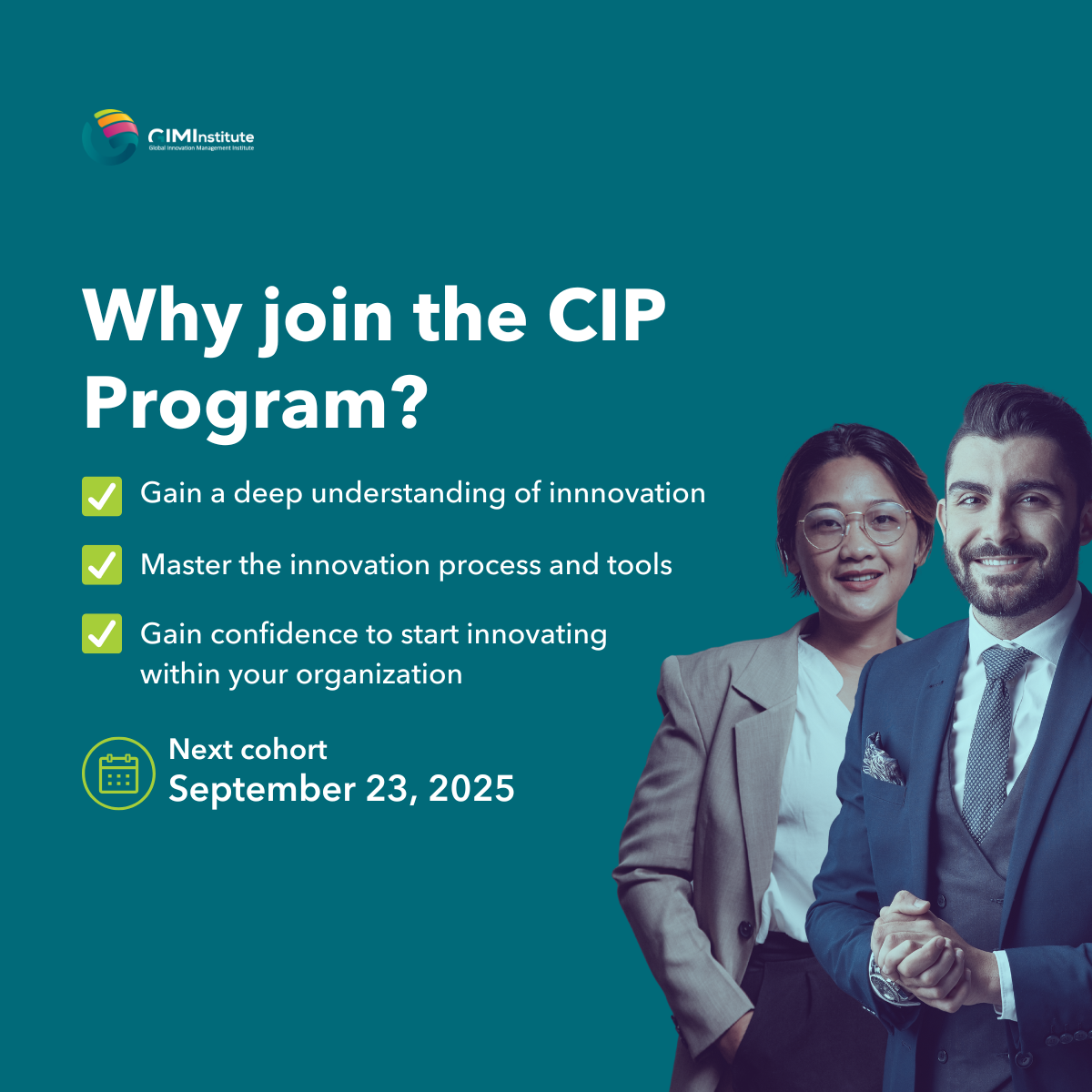The Seven Blind Mice: Why Innovation Fails
By: Dr. Irene Spitsberg, the Managing Director at InnoVentures LLC
Organizations tend to spend most of their innovation efforts on generating, evaluating and selecting ideas. While this is important, the real challenge emerges when attempting to bring these ideas to market. For many companies, the execution of innovation continues to remain an “afterthought” rather than becoming a crucial part of the innovation process.
Recently, I was reflecting on the story of The Blind Men and the Elephant. It’s a story that’s been told and adapted many times. In The Seven Blind Mice picture book, the men are portrayed as mice.
As the story goes, each blind mouse touches one part of the elephant, and based on his limited senses describes what he thinks the mysterious creature might be. A seventh hero mouse runs over the creature’s surface and determines what it truly is: an elephant.
When it comes to the “how to” of innovation, there’s certainly no shortage of perspectives or collective experience. Organizations continue to implement and share new trends, methods, tools and approaches. Radical and Disruptive innovations, Blue Ocean strategies, Business Model Generation, Open Innovation—these concepts have been around for a while now, generating new ideas around and methods of innovation. Some newer trends, such as Agile Innovation and Lean Start-up concepts, continue to emerge, promising (though not always delivering) new creative solutions and sources of innovation.
So why, despite widely available knowledge and applied organizational resources, does delivering innovation remain elusive today? Most academics and consultants paint only a partial picture of the delivery of innovation inside organizations. And most business leaders, while aware of the aforementioned concepts, fail to link them together or fully integrate them within their companies for desired results.
What Are The Most Common Innovation Challenges?
Generating ideas. Truly new ideas rely on more than incremental improvements of existing product lines and services. Opportunities emerge from the convergence of multiple market and technological perspectives, as well as insights that pertain to industry structure and dynamics. This convergence demands a focused application of skill and talent—hard work that needs to be systematically organized and funded.
Selecting the most promising new growth ideas is more difficult than continuing with incremental product and service improvements because for the latter, customer and market requirements are already well understood. Selecting new ideas and making that choice, however, requires astute predictions about business viability and commercial potential at a stage when much information is not available.
Testing ideas and reducing uncertainty. Also known as “probe and learn” tactics, or iterative development. Agile methods and the role of partnerships can be emphasized to reach prototype stage testing sooner.
Structuring the organization to support higher-risk programs. Typically, without executive support these kinds of initiatives die. Organizations that have a built-in support structure still need to find a way to secure ongoing investment, because they must continue to re-align internal resources as projects move from the “Front End” of discovery to the “Back End” of execution.
This list is by no means exhaustive. Stepping back for a moment to the Blind Mice and the Elephant: we can see that solving or addressing each challenge as a problem of its own, still doesn’t help to identify the “elephant” – or, how to execute on innovation.
A Higher-Level Perspective
I think the following high-level view can help provide a necessary perspective.
Regardless of different terminology used, all innovation programs within companies can be roughly divided into two categories – innovation in the “core” and innovation in the “new”. (Here the “core” refers to a company’s core business more readily identified with a company’s name, and the “new” means new market, new technology, new business model or a combination.)
When it comes to innovating in the “core” (aka New Product Development), most organizations today embrace the Stage-Gate approach. The key to this strategy is creating a structured process for aligning various functions (e.g. R&D, Marketing, Sales, Manufacturing) to deliver new products to market (the process is often called “Idea to Launch.”) The Stage-Gate approach is fundamentally based on the understanding and acceptance that as ideas are commercialized, the company’s resource allocation increases exponentially, as does the organization’s cross-functional engagement, which is necessary for bringing the new offerings to market.
Granted, innovating in the “new” requires a different process; one apt for experimentation and handling uncertainty. But how can we presume the successful commercialization of new ideas without a process that’s systematic, and designed to drive cross-functional alignment? Or that by simply applying useful but separate concepts (without integrating them into a coherent business process) we would get desired results?
The Innovation Paradox
So, here is the paradox: while most organizations today practice disciplined stage-gate type processes for developing and commercializing new products in the core, most of those same companies do not recognize the need for that systematic business process in the “new.” Instead, they approach innovation in an intuitive and exploratory manner either with process that doesn’t fit or without a process altogether.
And this is why many innovations fail—not because of technological flaws or lack of market acceptance, but because bringing “new” ideas to market requires continuous realignment of limited company resources, and these have to be reallocated from day-to-day business operations. Initiatives in the “new” aren’t likely to result in short-term returns. Therefore, the decisions that reallocate spending are harder to make unless there is a clear organizational strategy around innovation (that drives focus and sets priorities) and a well-defined business process (that provides decision-making rules and guides assignment of the necessary resources).
The “3S” View: Strategy, Structure, Systems
One useful way to think about delivering innovation may be through a “3S” lenses – Strategy, Structure, Systems: Strategy defines what initiatives should be pursued and where the investment of company’s resources should be made. Structure defines how an organization’s resources are deployed and how alignment of various functions is achieved. Systems define the operation processes for how objectives are achieved and set rules for how things are done and decisions are made.
Most of the popular innovation concepts and tools are focused on selected elements of Strategy (think Blue Ocean vs. Red Ocean Strategy, Disruptive vs. Sustaining Innovation) and selected elements of Systems (e.g. various methods for opportunity identification, business model generation, Agile development, etc.). However, as we already know from our experience with the Stage-Gated process, all of the three S’s should be fully considered and systematically integrated within an organization to deliver on innovation.
For example, as Gary Pisano of Harvard Business School wrote in his recent paper, HBR, 2015: “You need an Innovation Strategy” , organizations rarely tie their corporate strategies to innovation strategy. And this is exactly what is required to “help them to make trade-off decisions so that they can set overarching innovation priorities that align all functions.”
But even a good strategy alone isn’t enough to deliver business success. The “3S” perspective clarifies that what’s also needed is a defined business process to guide a company in its execution of “new” initiatives. This process will describe how programs are initiated and selected, how they move through the development stage and are evaluated, and how various functions come into play as the programs move from the front-end of discovery to the back-end of execution.
So, if we once again return to the metaphor about the blind mice and the elephant:
It appears that the seventh mouse is missing from the “innovation tale,” which is the allegory of the search for a coherent process that’s necessary to tie together all the important and related but separate innovation concepts and structural elements. As the stage gate process must be installed to effectively deliver products in the “core,” so must another type of systematic process be devised and “installed” in order to successfully deliver the “new.” This process must allow for fast experimentation and adaptation, and at the same time provide a basis for deep, systematic connections between the innovation teams and the rest of the business.
In my next article, I am planning to share an Execution of Innovation model. It’s an analysis of and a reflection on successful innovation programs employed within large companies, which I either led myself or studied. It can help innovation leaders define more precisely what capabilities are needed within their organization in order to build a successful innovation program.
About the author:
Dr. Irene Spitsberg is the Managing Director at InnoVentures LLC, a strategic innovation company, where she works with Fortune 500’s as well as smaller companies on their toughest innovation strategy and execution problems.
Irene was the key strategist and driver in establishing Innovation Ventures Group at Kennametal, where she was responsible for multi-national cross-functional teams working on the development and commercialization of new offerings in adjacent and new spaces. Her other roles included Director Global R&D Business with Cristal and a number of technology leadership positions with GE Aviation. Known for developing and implementing leading-edge innovation management frameworks and organizational solutions, Irene is a frequent speaker and author on the topics of Innovation management. Irene holds a PhD in Material Science, is the inventor or co-inventor for over 80 US patents, is a leading author of two featured papers in Research-Technology Management journal and is a recipient of NASA’s “Turns Goals into Reality” Award.


